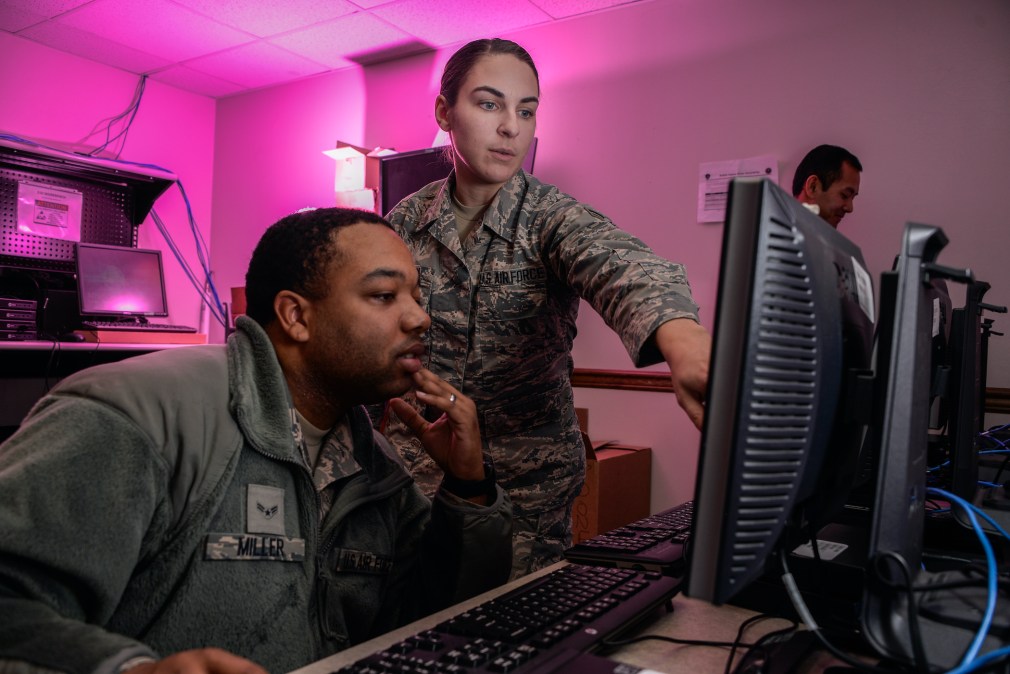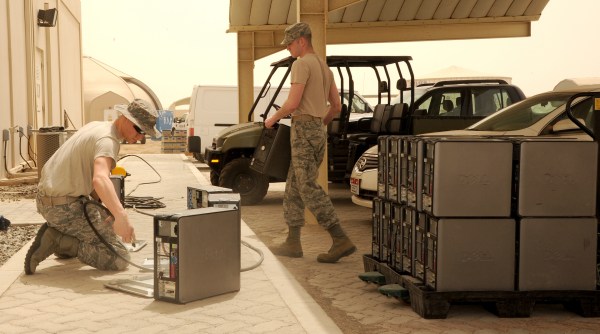Air Force’s multibillion-dollar Enterprise IT as a Service program cleared for takeoff

The Air Force is “moving forward” with Wave 1 of its Enterprise IT as a Service (EITaaS) program after the Government Accountability Office denied the latest bid protest, the service said in a release Friday.
The EITaaS program is meant to outsource basic IT services so that the Air Force can free up airmen for more specialized, cyber-focused network defense and mission assurance.
Officials have said that with Wave 1, the department will for the first time have enterprise IT service management, one platform and one easy way to enter a trouble ticket, as well as a wider variety of end-user devices and an easier way to order them. The initiative will include improved and consolidated service desks for more than 800,000 users worldwide, and it’s also expected to yield major lifecycle cost savings.
“Wave 1 will transform DAF IT services from in-house, base-centric delivery models to an enterprise servicer model,” according to Friday’s release from the Air Force Life Cycle Management Center.
In August, the Defense Department announced a $5.7 billion blanket purchase agreement award for Wave 1 to an industry team led by CACI NSS, with support from Bowhead Logistics Management, Cartridge Technologies, InSequence, Cask NX, CDIT, Vision Information Technology Consultants, Oneida Technical Solutions, Enhanced Veterans Solutions, and Expansia Group.
However, in September the losing bidders — Accenture, Peraton and Science Applications International Corp. — each filed protests with the Government Accountability Office.
“The protesters challenged various aspects of the agency’s evaluation of quotations and the best-value tradeoff decision. The protesters also alleged that CACI obtained an unfair competitive advantage due to its employment of three former agency employees,” according to the GAO.
The watchdog eventually “dismissed the protests as academic” after the Air Force “elected to take voluntary corrective action in the form of a reevaluation of quotations, a new best-value tradeoff decision, and an investigation into the alleged unfair competitive advantage.”
After the Air Force’s reevaluation, service officials again determined that CACI presented the best value and informed contractors in December. Peraton then filed another protest with the GAO.
“Peraton raises several allegations challenging the agency’s evaluation of quotations and the resulting selection decision. Peraton alleges that CACI obtained an unfair competitive advantage through its employment of former Air Force personnel, and the agency’s failure to disqualify CACI from the procurement on that basis was unreasonable. The protester also challenges the Air Force’s evaluation of CACI’s quotation under the gate one prior experience factor, the evaluation of both vendors’ quotations under the gate two non-price factors, and the best-value tradeoff decision,” the GAO said in its April 12 decision on the latest protest, which was released last week.
“Although we do not address all of the protester’s arguments in this decision, we have considered each argument and find no basis to sustain the protest,” the agency said.
Peraton has not responded to a request for comment. CACI did not provide comment to DefenseScoop by the publication deadline.
Work on the EITaaS program had been on hold while GAO considered the protest.
“After several rounds of protest, the Government Accountability Office denied the final challenge … clearing the way for the Air Force and CACI NSS LLC to move forward with a blanket purchase agreement for Enterprise Information Technology as a Service ‘Wave 1’ services,” the Air Force said in the release on Friday.
The service first initiated “risk reduction” pilots under the EITaaS initiative in 2018 that included AT&T and Microsoft. Wave 1 will allow the Air Force to embark on the full-scale program.
“We have seen the user experience improve dramatically at the current bases participating in our risk reduction efforts, and we are excited to be moving forward in providing these services to all our Airmen and Guardians,” Col. Justin Collins, senior materiel leader for the enterprise IT and cyber infrastructure division at AFLCMC, said in a statement.
When the contract award was first announced last year, the DOD said the work was expected to be completed by Aug. 29, 2032.
“Work will predominantly be performed in Chantilly, Virginia, with additional locations depending on individual BPA order requirements,” per the announcement.
Meanwhile, the Air Force is planning for Wave 2, which will include overhauling base infrastructure, CIO Lauren Knausenberger said last year at a forum hosted by the Potomac Officers Club, adding that about 30 bases will be prioritized. The service has not yet issued an award for the next wave.
“I suspect that the money will come when one of our industry partners knocks it out of the park and shows us that that next-generation architecture makes a huge impact for unclassified and secret warfighting capabilities as well as a huge impact to our business capability, our ability to fight with our allies and our ability just to be more efficient in our day-to-day business,” Knausenberger said.






